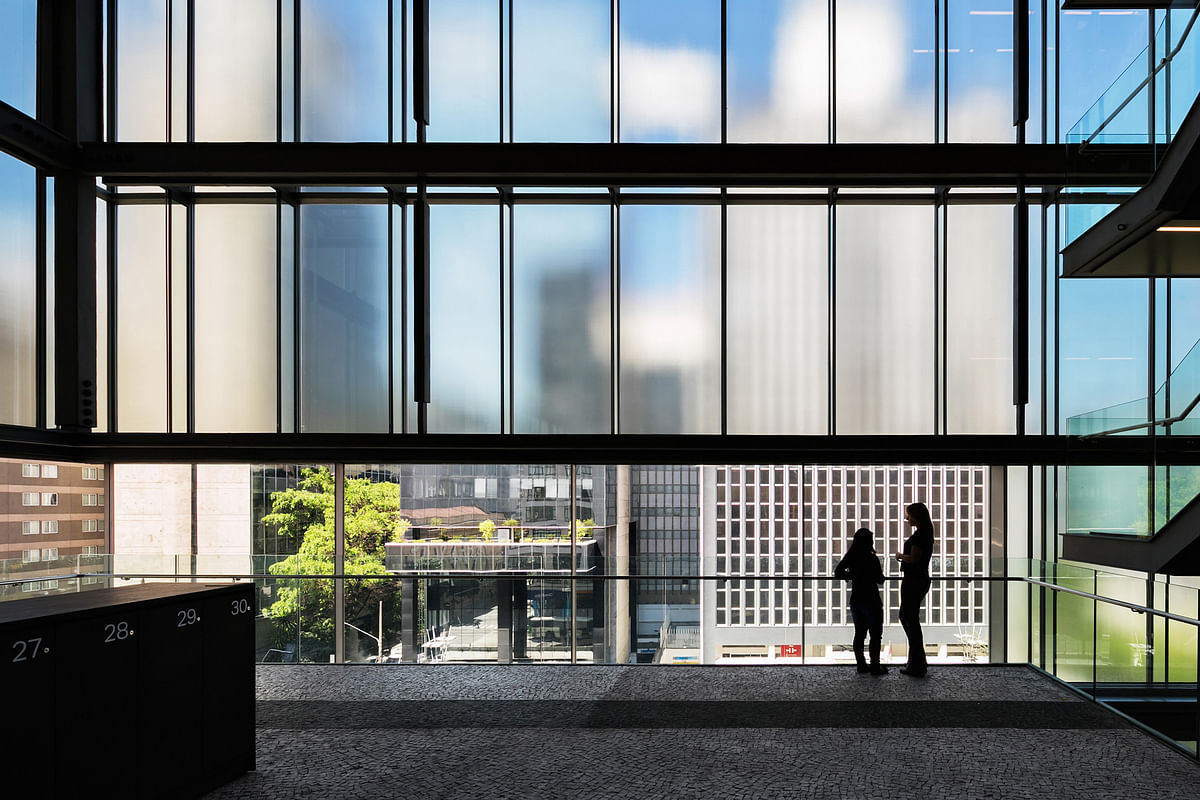
Six finalists of 2018 Mies Crown Hall Americas Prize announced
By Justine Testado|
Monday, Jul 30, 2018
Related
The competition pool for the 2018 Mies Crown Hall Americas Prize has narrowed down to the final six projects, which were selected from the 31 Outstanding Projects announced back in May. First awarded in 2014, the biennial MCHAP recognizes distinguished architectural projects built in North and South America. Eligible projects for the 2018 edition were completed between January 2016 and December 2017. While visiting the finalist projects, the jury — which includes Ricky Burdett (chair), Jose Castillo, Ron Henderson, Rodrigo Pérez de Arce, and Claire Weisz — evaluated each one for their potential for lasting influence in architecture and culture.
The winning project will be announced during a symposium at the IIT College of Architecture in Chicago on October 10. The winners will receive the MCHAP Award, the MCHAP Chair in IIT’s College of Architecture, and $50,000 to fund research and a publication.
Read more about the finalists below.
Edificio E, University of Piura in Piura, Peru
Completed: April 2016

Project Objectives: “The building stands as a new educational typology created under four main concerns. A new learning landscape: The building offer spaces that can enrich learning, focused on enhancing quality of life as much as on supporting the learning experience. For achieving this, the building stimulates informal learning outside classical learning spaces. Learning can take place anywhere/anytime, blending mobile technology with social activity in the multiple non designated open spaces it offers.
Sense of community: The creation of non-designated spaces 5 for students to work together outside the classrooms contributes to creating a sense of community, where the shared interests developed via networks is enriched through face to face interaction. Social and economic boundaries tend to blur when people learn to know each other in these nonhierarchical spaces.
The building as a campus: Although clearly defined by a 70 x 70m quadrangular shape, the building is composed of 11 independent structures, two and three levels in height, under ample cantilevered roofs that emerge from each one, providing shadow over multiple gathering and circulation places. It has a permeable ground floor that favors shortcuts across the building when walking through the campus. Space and Climate: By creating a comfort zone in the permanently sunny, hot, and dry climate of the Peruvian northern desert, the shaded open-air spaces nurture the academic life the same way the dry forest allows living in the desert.”
Primary author: Barclay & Crousse Architecture
Contributing authors: David Leininger (Assistant); Julio Higashi (Structural Engineer)
Author: Universidad de Piura – María Pía Chirinos – Research Vice-Provost
SESC 24 de Maio in São Paulo, Brazil
Completed: August 2017
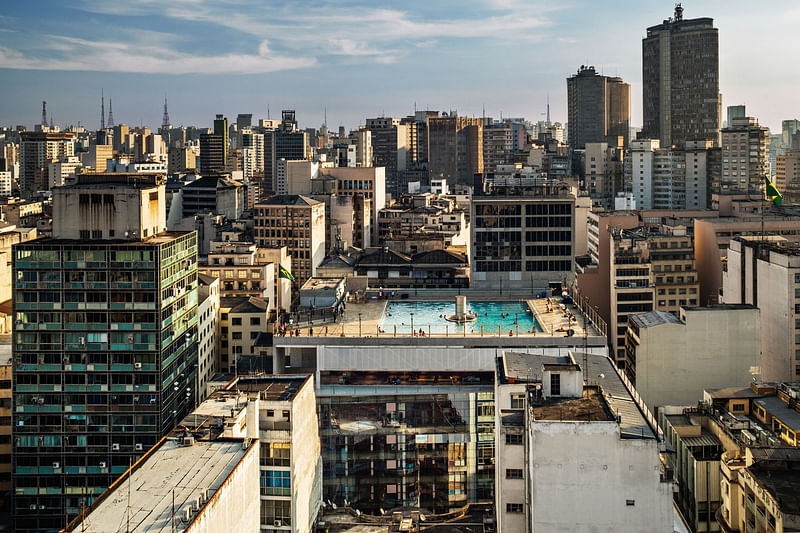
Project Objectives: “Besides transforming the building structure of Mesbla, a former department store, this social center for leisure and culture also agglutinated a neighbor small building that was demolished to give way to the construction of a technical block reserved for services and equipment. In the central void of the main building, which used to serve as an illumination gap crowned by a skylight at the old store section, a new independent structure consisting of four cylindrical pillars supports new slabs. To expand the area of the original slabs by nearly 500 square meters, the proposal made the floors continuous. In these new spaces were concentrated uses that need greater voids, such as the theatre inserted in part of parking area (with an independent access) and the double-height exhibition hall. On the top, the new structure supports a new volume, three floors high, congregating cafe, locker rooms, and a pool on the roof. The ground floor, 7 named SESC Square, is an extension of the street and most of the spaces in the social facility are open to everyone. The vertical circulation gains potential by a series of ramps that connects continuously the complex program and invites visitors to explore the building.”
Primary author: Paulo Mendes da Rocha and MMBB Arquitetos
Author: SESC – Social Service of Commerce from São Paulo State
Smithsonian National Museum of African American History and Culture in Washington, DC, USA
Completed: November 2016
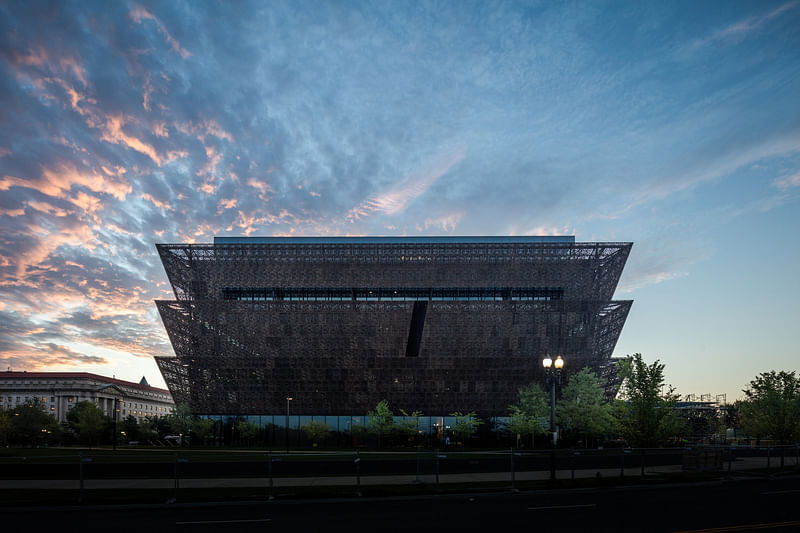
Project Objectives: “Located on Constitution Avenue, adjacent to the National Museum of American History and the Washington Monument, the museum houses exhibit galleries, administrative spaces, theatre space and collection storage space for the NMAAHC. As Lead Designer for the Freelon Adjaye Bond/SmithGroup (FAB) team, David Adjaye’s approach has been to establish both a meaningful relationship to this unique site as well as a strong conceptual resonance with America’s deep and longstanding African heritage. The design rests on three cornerstones: the 9 ‘corona’ shape and form of the building; the extension of the building out into the landscape — the porch; and the bronze filigree envelope.”
Primary author: Adjaye Associates
Contributing authors: Freelon Group, Perkins + Will (Architect of Record); Davis Brody Bond / SmithGroupJJR (Associate Architect)
Author: Smithsonian Institution
Teopanzolco Cultural Center in Cuernavaca, Mexico
Completed: July 2017
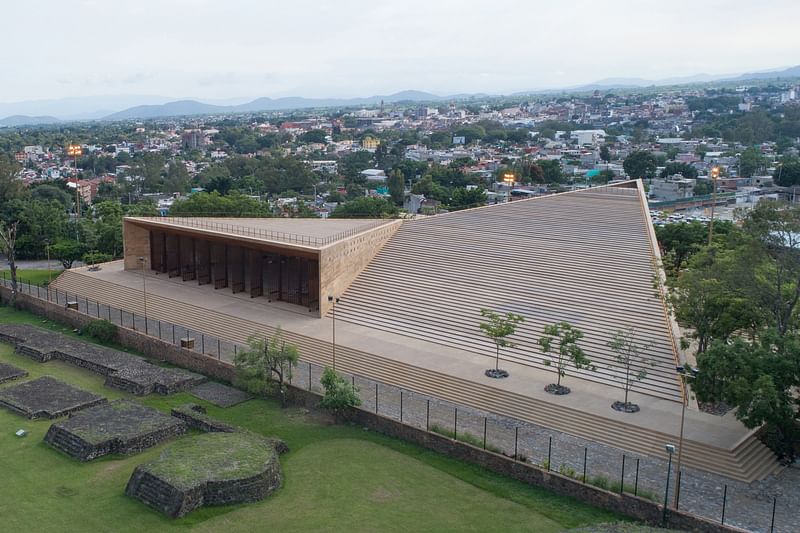
Project Objectives: “The building is organized around two elements with strong geometric definitions: a triangular building that contains the public programs (lobbies, services, box office, restrooms, the 800 seat performance hall) and the platform surrounding it that contains the backstage (dressing rooms, storage, workshops, etc.), including a multipurpose black box theater mostly used for rehearsals. The horizontal platform surrounding the triangular building serves as a viewing area towards the city. This grand plinth contains a series of patios and openings to preserve existing trees, green areas, and an open-air theater space. The main triangular-shaped roof comprises a large stepped ramp reducing the physical presence and visual impact of the new building, as well as converting the roof itself into an additional open-air auditorium, which has the archeological site as a backdrop. This great triangular esplanade forms the roof of the auditorium’s main hall, and contains another, smaller triangular esplanade that in turn forms the roof of the main lobby. Both platforms descend in opposite directions and create a visual interplay of inclined planes that can be appreciated from different points of the building. The interplay of these platonic solids creates an exciting composition of outdoor spaces, open viewing platforms, and shaded plazas that can be activated in multiple ways.”
Primary authors: Carlos Bedoya; Abel Perles; Wonne Ickx; Victor Jaime; Isaac Broid
Contributing authors: Alejandro Luna e Itzel Alba (Theatre Counsel); Cristian Ezcurdia (Acoustic Counsel); Ed Arenius, Raj Patel, and Jaume Soler - ARUP (Acoustics, AV and Theatre Advisors)
Author: Cristina Faesler - Secretary of Culture of the State of Morelos
True North in Detroit, MI, USA
Completed: June 2017
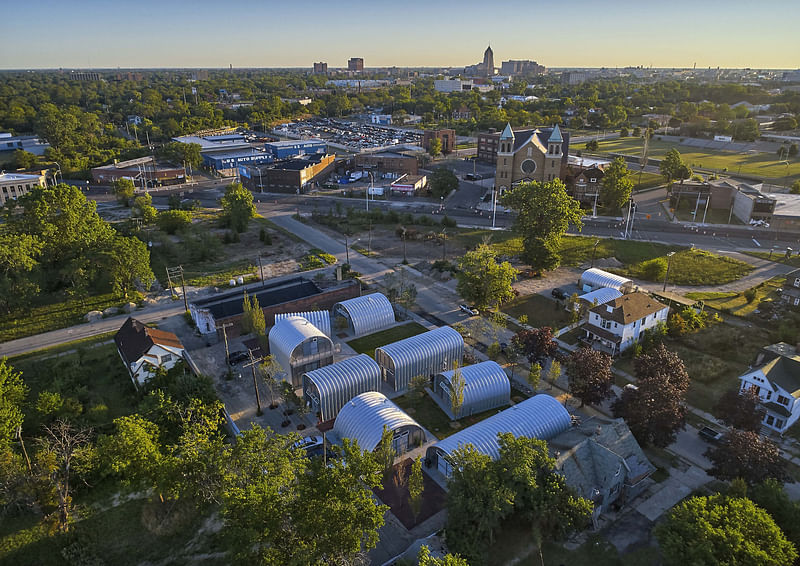
Project Objectives: “EC3 commenced by presenting the design utilizing a physical model to the City of Detroit’s Planning and Development Department — as the developer still needed to secure a much-needed parcel to complete True North’s .57-acre site. The site was secured on the first meeting and the shared vision for True North was to elevate the simplicity and prowess of the Quonset Hut form for how we live and work today, as well as to meet the regulatory codes and requirements for new residential development. Following a community engagement barbecue 13 and several rounds of questions and answers, True North was green lighted by the community and the city to proceed into construction.
Fully realized in less than one year, True North is a development comprised of nine rental residences and shared community spaces with over 30 newly planted trees. Located two-and-a-half miles from Downtown Detroit in a quiet, spacious neighborhood, it is pioneering for both where and what is being built. The strategic placement of the huts is driven by a need for openness and security, views and privacy, socializing and solitude. Each structure is assembled on top of a four-inch concrete slab with in-floor radiant heat, which is also the unit’s finished floor. The end walls feature custom steel framing around polycarbonate panels that provide a higher level of security, natural light, and high thermal value. Each interior is unique and designed to inspire different creative lifestyles in Detroit.”
Primary author: Edwin Chan
Contributing author: Studio Detroit (Architect of Record)
Author: Prince Concepts
IMS Paulista in São Paulo, Brazil
Completed: September 2017
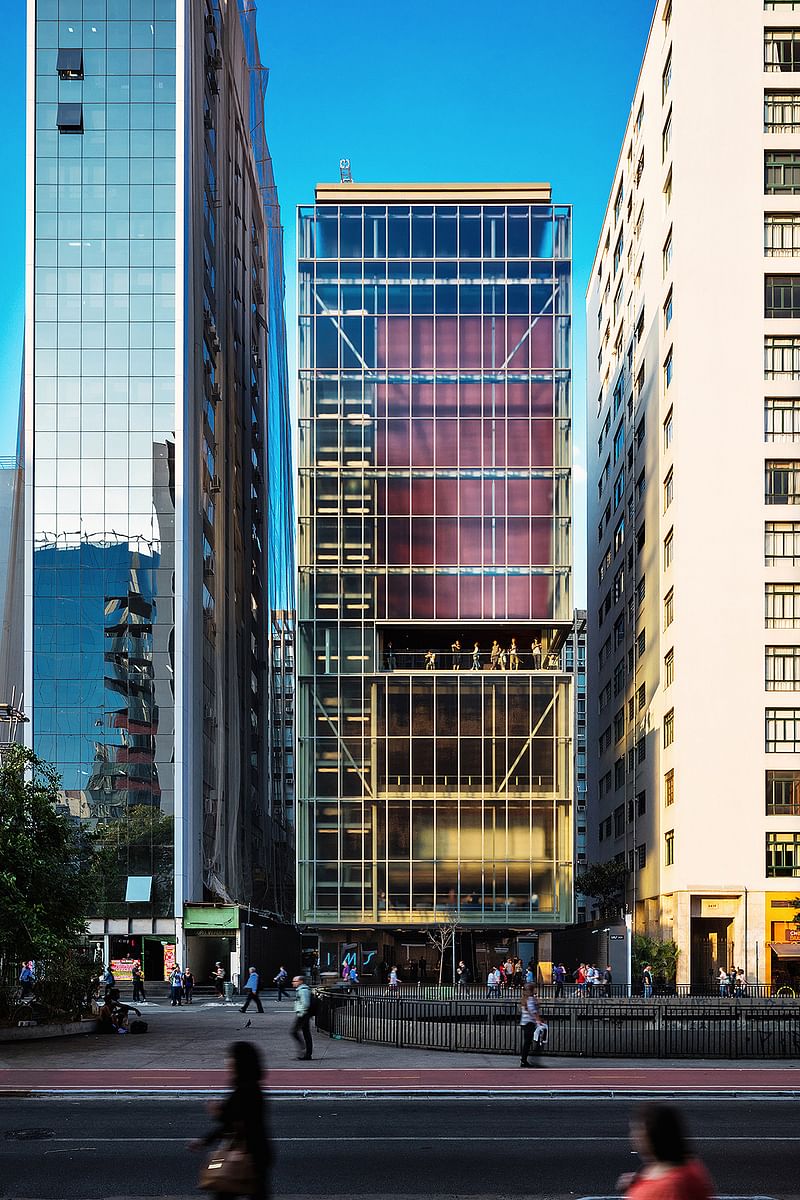
Project Objectives: “The main concept was to transfer the ground floor of the museum from the bottom to the center of the building, fifteen meters above the level of Paulista Avenue, creating an entirely new open relationship between the museum, the city, and its inhabitants. From the elevated ground floor, the perception that the visitor has of the program spaces is straightforward and clear. The ground floor was transformed into a gathering and distribution plaza, which also has a cafe and shop; above the plaza, hovering over it, the exhibit spaces are protected in a closed volume; below it, the Media Library programs are grouped as a large meeting space dedicated to movies, music, literature and, more generally, to research and knowledge production. The spatiality of the museum is perceived and given mainly from the voids of the edifice, which are the spaces of circulation and meeting that spread between the program volumes and the facade of the building. The materiality of the facade—made with a self-supporting translucent glass— creates a quiet, cozy space. Likewise, the light that infilters these spaces carries with it the trail of the city, bringing into the museum the memory of the world that lies around it. Translucent glass as a second skin allows the museum to be perceived as a well-defined and whole volume, with the necessary force to confirm its position among its neighbors and other buildings on Paulista Avenue.”
Primary author: Andrade Morettin Arquitetos Associados
Contributing authors: José Luiz Canal (Construction and Project Management); Ycon Engenharia (Structural Engineer); G.O.P. (Structural Engineer); Moretti Engenharia Consultiva (Foundation Engineer); LZA Engenharia (Electrical Engineer, Fire and Safety); Front Inc. (Facade); Grupo Galtier (Facade); Greenwatt climatização (Air Conditioning); GPIC (Fire and Safety, Automation, Telecommunication and Audiovisual); Urben Arquitetura (Law Consultant); Peter Gasper & Associados (Lighting Consultant); Lux Projetos (Lighting Consultant); PROASSP Project Management and Consulting (Waterproofing); Empro Comércio e Engenharia em Transporte Vertical (Vertical Transport); Quadradão Programação (Visual Programming); Walderez Nogueira Soluções Gastronômicas (Restaurant and Coffee); Harmonia Acústica Akkerman, Holtz (Acoustics); All’e Engenharia Construção (Construction)
Author: Instituto Moreira Salles
All photos courtesy of 2018 Mies Crown Hall Americas Prize.

RELATED NEWS These are the selected projects in the running for the 2018 Mies Crown Hall Americas Prize

RELATED NEWS “Common Unity” in Mexico City wins 2018 MCHAP.emerge award

RELATED NEWS SANAA's Grace Farms “River” project crowned as MCHAP winner


Share
0 Comments
Comment as :